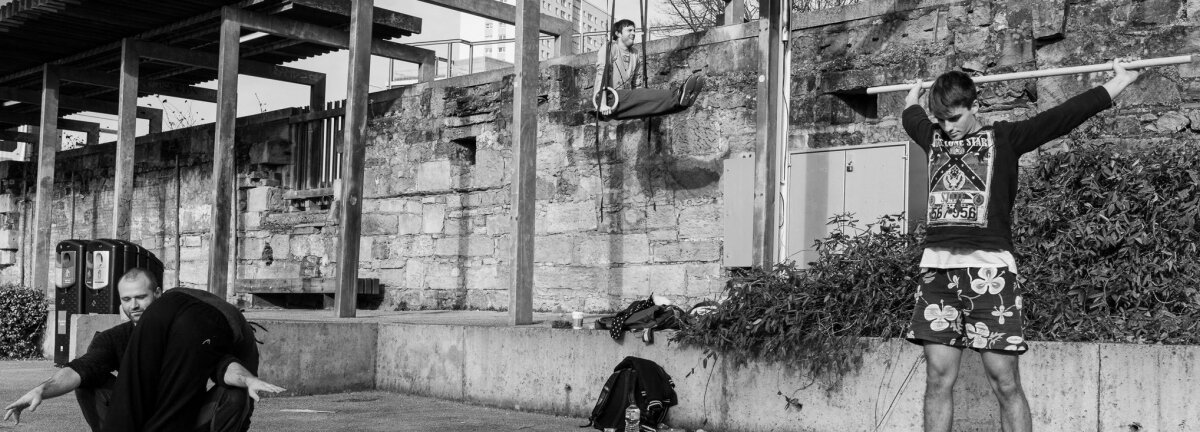New visions of the city through the arts

David Banks was one of two winners of our Active by Design IdeasTap competition with his proposal for Movement Codes – a bank of instructional videos, accessed using QR codes found in locations across the city of Glasgow. The videos would help members of the public reclaim public spaces by training them to use the architecture for outdoor physical activity.
Here, David discusses the role of the arts in providing new perspectives and visions of the city that can help people feel connected to their locality and be more active as a result.
Our current urban conditions reject possibilities for creativity and make it difficult to form local and individual identities within city structures.
The surfaces belong to advertisements and the city space to carbon copy architecture. One’s claim on space is second to a capitalist structure that is designed specifically for monetary ideals: public space and local environment is being commoditised.
With our cities designed to promote specific needs such as cost efficiency, safety and usage, the need for expression and identity is often neglected. The urban landscape is created according to the generalised needs of the masses and not of the individual.
We can identify structures in the space around us; we see buildings, roads, walls, railings, parks, pavements and so on. Over time these spaces evolve and change: with the constant development of our cities and towns how can we reclaim them as our own?
Parkour and graffiti are both forms of expression that transgress architecture’s function, providing the individual with a framework in order to respond to their environment – whether the practitioner is finding a canvas, an obstacle or simply a point of interest.
Architecture ought to be designed for actions it invites.
Madeline Gins and Arakawa, Architectural Body
They are a contrast of arguably similar forms – the physical and virtual bodies that paint our walls, staircases and urban landscape. Parkour allows the body to move through space and graffiti, as image, connects bodies.
Both of these forms of expression, amongst others, are limited by the rules and regulations of the city. In the publication Architectural Body (2002), architects and artists Madeline Gins and Arakawa argue that architecture “ought to be designed for actions it invites.”
However, if people do not have the power to transgress that initial function then what’s the point? How can we encourage new cultures to develop and communities to grow when they are stifled from the get go?
From skate stoppers through to ‘No ball games’ signs and the dispersal of public gatherings, the powers that be are often unable to differentiate between positive and negative activity in our city streets. I believe a greater effort needs to be made to reclaim the streets and parks for more free and open activity.
Of course there is a darker side to this coin and certain structures and boundaries are put in place to help safety, efficiency and movement across the city. However when we are limited from climbing trees in our local park and faced with yet another Tesco or car park, I feel we should respond.
So go on. Smooth off the skate stoppers and yarn bomb a statue. Create a garden where you like, climb trees and draw on walls. The city is yours if you choose to see it that way.
Subscribe to our newsletter
Want to keep up with the latest from the Design Council?
